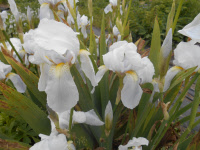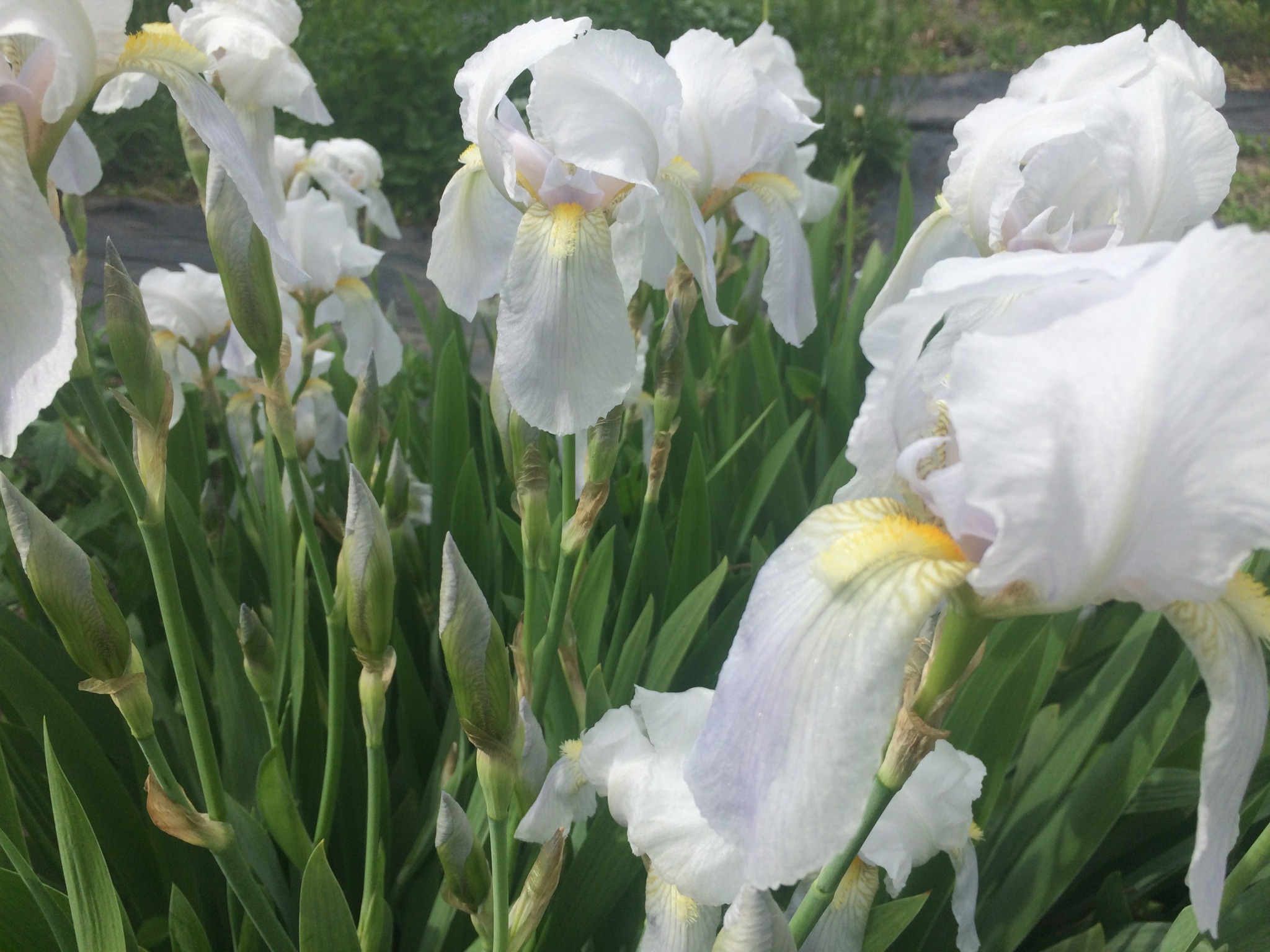Description
Sweetly fragrant, tall, icy blue-white iris with pale yellow signal on the fall, flowering in June
Sweetly fragrant, tall, icy blue-white iris with pale yellow signal on the fall, flowering in June
Sweetly fragrant, tall, icy blue-white iris with pale yellow signal on the fall, flowering in June
Clusters of crimson, star-shaped florets atop 2’ stems bloom their heads off ALL summer into fall.
Size: 24-36”x 12”
Care: Sun in well-drained alkaline soil, drought tolerant
Native: Mediterranean
Wildlife Value: attracts butterflies, bees and hover flies.
Centranthus is from the Greek meaning “spurred flower.” According to Culpepper, an English herbalist from the early 1600’s, this plant comforts the heart and stirs up lust. Parkinson, in 1629 describes it “of a fine red colour, very pleasant to behold.”
OUT OF STOCK
Rosettes of succulent leaves
Size: 4” x 4”
Care: sun in well-drained to moist well-drained soil
Native: Alps & Pyrenees Mountains
Grown in gardens for thousands of years. Sempervivum means “live forever.” Romans planted Hens and chicks on their roofs to ward off lightening. As a succulent it holds water and is probably more difficult to catch fire. “This practice was preserved for historians when Charlemagne (720-814), first Holy Roman Emperor and unifier of a large part of northern Europe, ordered that all villagers within his crown lands plant houseleeks on their roofs He decreed: “Et ille hortulanus habeat super domum suam Iovis barbam. (And the gardener shall have house-leeks growing on his house. Capitulare de villis, about 795, LXX.)”
SHRUB Boxwood
Size: 24” x 30”
Care: Light to Part shade in well drained, alkaline soil. Do not crowd with other plants, roots prefer no competition. Fertilize regularly for dramatic growth. Prune in early spring. Unlike English boxwood this can be pruned back hard. One of a few shade tolerant evergreens and deer resistant too. Also the most hardy Boxwood.
Introduced from Asia to American and European gardens around 1900 by Ernest Henry “Chinese” Wilson (1876-1930) who scoured Asia for plants.
Balloon shaped buds as though puffed with air, open to white, five-petal bells from mid-summer to early fall.
Size: 24" x 12"
Care: Sun to part shade in moist well-drained soil, heat and drought tolerant. Deadhead for rebloom.
Native: Eastern Asia
Wildlife Value: attracts hummingbirds, bees & butterflies
Awards: England's Royal Horticultural Society Award of Garden Merit.
Platycodon is Greek from platys meaning “broad” and kodon meaning “bell”, referring to the shape of the flower. Cultivated in China for hundreds of years where it is called Jie-geng. The Chinese used the root boiled to cure a chill in the stomach. Mentioned in Man’yoshu, a Japanese anthology of poems written in the 8th century. German botanist Johann Gmelin first collected this in Siberia in 1754. Gmelin’s Siberian mission, sponsored by Catherine the Great, took 10 years and nearly killed him. Gmelin introduced it to European gardens by 1782. Robert Fortune found the white form in a nursery near Shanghai and sent it to England in 1845.


